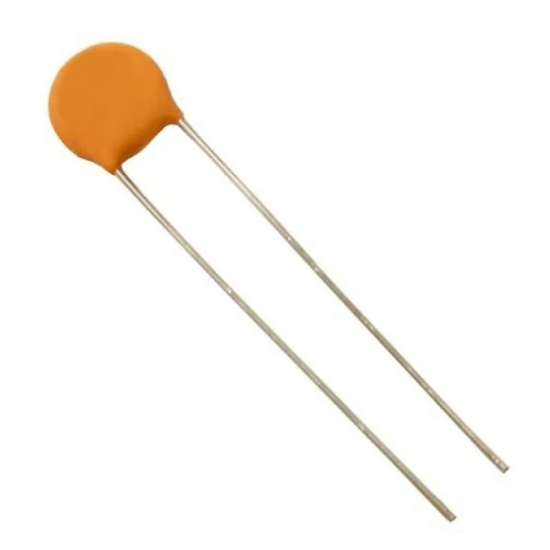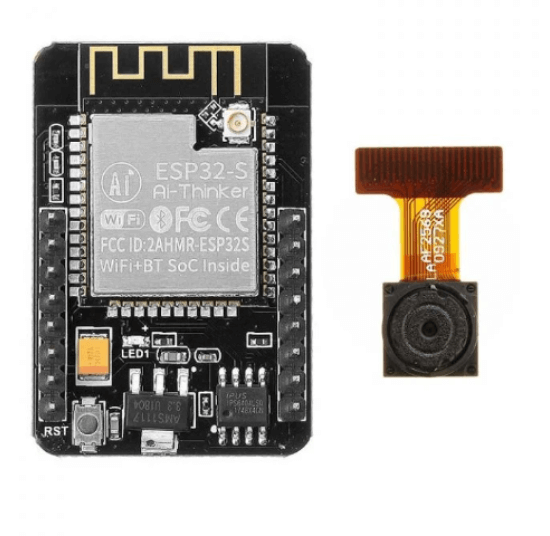0.01uF 50V -103 Ceramic Capacitor DIP -(pack of 10)
In stock
- Capacitance: 0.01uF
- Voltage: 50V
- Mounting: Through Hole
- Tolerance: ±10 %
- Material: Ceramic
₹17.00 ₹69.00 (Price Excl. GST) ₹14.41
In stock
CompareThis 0.01uF 50V -103 Ceramic Capacitor DIP is made of ceramic dielectric in which several interleaved metal electrodes are contained. It is very low cost and used mostly for reducing the noise or filtering on data lines, power lines, etc.
A 0.01uF 50V -103 ceramic capacitor in DIP (Dual Inline Package) configuration is a fundamental electronic component widely used in various circuits for filtering, decoupling, timing, and coupling applications. Let’s dissect the specifications and explore the significance of this capacitor in electronic circuits.
The designation “0.01uF” specifies the capacitance of the capacitor, measured in microfarads (µF). This value indicates the capacitor’s ability to store electric charge. In this case, the capacitance is 0.01 microfarads, which translates to 10 nanofarads (nF). While relatively small compared to electrolytic capacitors, ceramic capacitors are preferred for their stability, low losses, and high-frequency characteristics, making them suitable for applications requiring precise capacitance values and high-speed operation.
The “50V” rating denotes the maximum voltage that the capacitor can withstand without risking breakdown. This voltage rating ensures that the capacitor can safely operate within its specified limits without becoming damaged due to excessive voltage stress. It’s essential to choose a capacitor with a voltage rating higher than the maximum voltage expected in the circuit to prevent failure or damage, ensuring reliability and safety in electronic systems.
The “-103” designation is a code indicating the capacitor’s capacitance in picofarads (pF). The first two digits represent the significant figures, while the third digit indicates the number of zeros to follow. In this case, “10” signifies 10 pF, and the “3” indicates that there are three zeros following, resulting in a total capacitance of 10,000 pF or 0.01µF.
The term “ceramic” refers to the material used in the capacitor’s construction. Ceramic capacitors are fabricated using ceramic materials as the dielectric, offering advantages such as high stability, low losses, and excellent high-frequency characteristics. They are widely used in applications where stability, reliability, and compact size are critical, including consumer electronics, telecommunications, and automotive electronics.
The “DIP” configuration indicates the package style of the capacitor. DIP components have leads protruding from both sides of a rectangular plastic or ceramic housing, making them suitable for through-hole mounting on a printed circuit board (PCB). Through-hole components like DIP capacitors offer mechanical stability, ease of assembly, and compatibility with traditional PCB manufacturing processes, making them suitable for various electronic devices and systems.
Now, let’s explore some common applications of the 0.01uF 50V ceramic capacitor in electronic circuits:
- Decoupling and Bypassing: Ceramic capacitors are commonly used for decoupling and bypassing purposes in digital and analog circuits. Placing a 0.01uF capacitor across the power supply rails of integrated circuits (ICs) helps to provide a local reservoir of charge, ensuring stable voltage levels and reducing noise during sudden current demands.
- High-Frequency Filtering: Ceramic capacitors exhibit excellent high-frequency characteristics, making them ideal for filtering high-frequency noise and interference in circuits such as RF (radio frequency) filters, oscillators, and signal processing circuits. The 0.01uF capacitor can effectively suppress unwanted high-frequency signals, improving signal integrity and reducing electromagnetic interference (EMI).
- Timing and Oscillation: In timing circuits and oscillators, ceramic capacitors are used to determine the frequency and duration of signals. Combined with resistors, the 0.01uF capacitor can set precise timing intervals, enabling accurate frequency generation in applications such as clocks, timers, and pulse generators.
- Coupling and DC Blocking: Ceramic capacitors are also used for AC coupling and DC blocking in amplifier circuits, sensor interfaces, and audio equipment. The 0.01uF capacitor allows AC signals to pass while blocking DC, enabling efficient transmission of signals without interference from DC offsets or bias voltages.
- Voltage Regulation: Ceramic capacitors can be employed in voltage regulator circuits to stabilize voltage levels and improve transient response. Placing a 0.01uF capacitor at the output of a voltage regulator helps to reduce output impedance and improve load regulation, ensuring a steady and reliable voltage supply.
In conclusion, the 0.01uF 50V ceramic capacitor in DIP configuration is a versatile and essential component in electronic circuits, offering precise capacitance values, high stability, and excellent high-frequency characteristics. Whether used for decoupling, filtering, timing, coupling, or voltage regulation, this capacitor plays a crucial role in ensuring the performance, reliability, and efficiency of electronic systems across various applications and industries. Its compact size, compatibility with traditional PCB manufacturing processes, and reliability make it a preferred choice for designers and engineers in modern electronic design and development.
Applications:
- Consumer electronics, for example
Tuners, Television receivers, All types of cameras - Telecommunications
- Data processing
Note: Images are for reference only. The actual product may vary in terms of the markings on the capacitor. The dimensions may vary by 10% due to manual measurements.
Features:
- Supplied in tape on reel
- Nickel-barrier end termination
- RoHS compliant
- Halogen Free compliant
Package Includes:
1 x 0.01uF 50V -103 Ceramic Capacitor DIP -(pack of 10)
Specifications
| Capacitance | 0.01uF |
|---|---|
| Operating Voltage (VDC) | 50V |
| Tolerance(%) | ±10 |
| Operating Temperature Range (?C) | -55℃ to 85℃ |
| Mounting Type | DIP |
| Package/Size | 30 x 4.5 |
| Shipping Weight | 0.01 kg |
| Shipping Dimensions | 4 × 4 × 1 cm |
Shipping & Returns
Due to the type of products we sell, we accept limited returns. Below are the conditions where we can accept a return request.
MANUFACTURING DEFECT
If you receive a product with a manufacturing defect, please notify us within 1 day of receiving the product, supported by the proper pictures and description. Once our support team accept the return, we will provide a replacement or a complete refund including the return shipping cost.
WRONG ITEM SHIPPED
If you receive a different product than the ordered one, please contact us within 1 day of receiving the product, supported by the proper pictures and description. Once our support team accept the return, we will provide a replacement or a complete refund including the return shipping cost.
LIMITATION OF RETURNS
We don’t accept returns for products damaged by improper use of the product. Moreover, we don’t accept the return if the ordered product is unsuitable for any specific application. Please read the product specifications and datasheet before selecting and ordering a product.
WHAT VOID WARRANTY?
If the product is subject to misuse, tampering, static discharge, accident, water or fire damage, use of chemicals & soldered or altered in any way.
SHIPPING
We ship all over India. Please contact our support team at info@inventkart.com for any questions related to shipping.
Based on 0 reviews
Be the first to review “0.01uF 50V -103 Ceramic Capacitor DIP -(pack of 10)”
You must be logged in to post a review.







There are no reviews yet.